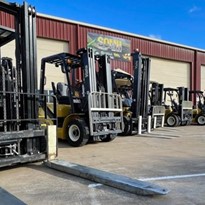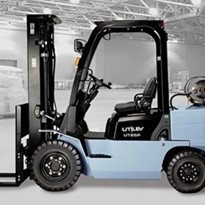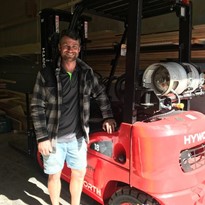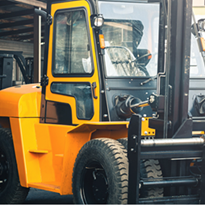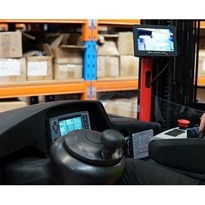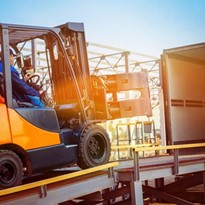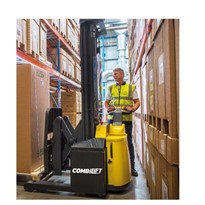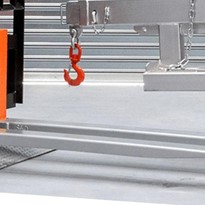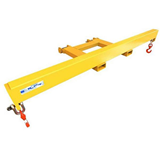Hand Pallet Jack (Truck)

A hand pallet jack uses a hydraulic jack to raise and move pallets. The wheels are located under each fork. The fork separates from the front wheels and hence lifts the pallet to create enough clearance to transport the pallet. If you’re looking to purchase a hand pallet jack choose a major manufacturer brand that includes a warranty. Hand pallet jacks do not require a licence to operate. Also ensure you follow simple pallet jack safety procedures.
Application Examples:
Floor Stacking applications for small businesses handling low stock levels such as stationary orders, work wear and other light stock applications.
Electric Pallet Jack (Truck)

An electric pallet jack is motorised with a battery electric engine. They are designed for faster handling and movement of pallets. They remove the strain of moving and lifting pallets. They come in either stand on or walk behind configurations. Stand on electric pallet jacks require a licence for operating while walk behind pallet jacks do not.
Electric Pallet Jacks have many different types of designs for different applications. The key differences between pallet jacks are driver standing position and fork length.
Long fork pallet jacks are designed for a cross docking application where two pallets are required to be handled at one time. Low level order pickers also look similar to pallet jacks in design but are used for picking stock from shelves.
Application Examples:
Floor stacking applications for small to medium size business with lower stock levels such as small retailers (e.g. fruit and vegetable stores). Also used for Cross Docking applications such as large supermarkets chains & retailers.
Manual Stacker
Manual stackers are operated by hand and are designed for pallet handling and lifting. They require manual action to lift loads up to 1500mm. These machines are suitable for double floor stacking and low level racking and shelving operations, however, these machines are very slow to operate and are only recommend for very low volumes such as 1 – 5 pallets per week.
Application Examples:
Manual Stackers are suitable for double floor stacking and low level racking & shelving applications. Manual stackers are suited for small to medium size businesses with lower stock level. Small retailers for example fruit and vegetable stores, general small storage room stock handling, such as office stationary, work wear & corporate gifts would benefit from this type of stacking machinery.
Electric Walkie Stacker (Walk behind Electric Pallet Stacker)

Electric walkie stackers come in a variety of different models and types. They are basically a pallet truck with a mast. They use the battery and engine compartments to counter-weight the load. These machines can come with lifting heights of up to 6 metres. A key advantage of this machine is that walk-behind models don’t require a licence. They also offer fast handling in narrow aisles.
The most common types are standard walkie stackers, walkie reach stackers, walkie straddle stackers and counter-balance walkie. There are different advantages depending on the type of walkie stacker at hand and the needs of the application must be taken into account in order to maximise these advantages.
Order Picker

Order picker forklifts are specially designed devices that are used to optimise the speed and ease of picking stock from both sides of a warehouse aisle.
To learn more about order pickers, read New order pickers from Adaptalift Hyster
Application Examples:
Order Pickers are well suited for general warehousing, storage, distribution centres with cooler and freezer applications along with line-feed operations. The wide variety of drive wheel options enables the tractor to work in numerous applications which can be tailored to specific use. The key industry segments which utilise order pickers includes: Grocery, Cold Storage, Distribution, 3rd Party Logistics, Pharmaceutical, Food and Beverage Manufacturing and Distribution and Fast Moving Consumer Goods.
Counter-Balance Internal Combustion Forklift

A counter-balance internal combustion forklift is a forklift which uses internal combustion to power the motor and lifting mechanism. The forklift comes with a balance weight, usually a cast iron bulk, at the rear. The balance of the forklift is achieved with this balance weight while the forklift is working or lifting. These types of forklifts are designed to run on a variety of fuel types, the most common being liquid propane and diesel.
Application Examples:
A counter-balance internal combustion forklift is useful in a wide range of applications, both indoors and outdoors. This type of forklift can also be used for longstanding continuous operation, due to the convenient refuelling mechanism.
Counter-balance Electric 3 Wheeled

A 3 Wheel electric drive configuration consists of a dual steer wheel(s) mounted centrally beneath the counterweight. One of the key advantages of a 3 Wheel Electric is that they offer a smaller turning circle than the traditional 4 Wheel electric forklifts (Note the J2.2-3.5XN has a comparable turning circle). However, 3 Wheel Electric forklifts are usually used for lighter load applications, as they have a load capacity range from 1000- 2500kg.
Application Examples:
3 Wheel Electrics are best suited to indoor warehousing with flat smooth surfaces. They excel in high racking applications where smaller aisles are required. If you’re utilizing selective racking and have smooth floors the 3 wheel electrics might be the solution for you. The 3 wheel is most popular in trade & retail industries, for example: Building Supplies, Plumbing, Home Improvement and Garden Centres. 3 Wheel Electrics are also suitable for manufacturing, distribution as well as food & beverage industries.
Counter-balance Electric 4 Wheeled

A 4 Wheel configuration consists of a single steer wheel on each rear corner controlled by a dual acting hydraulic ram. They offer more stability when turning and are better suited for rougher yard and warehousing floor applications due to the articulated rear steer axle. With capacities ranging from 1600kg-8000kg the 4 Wheel electric CB can be used for specialist heavy lifting applications such as machinery and tool installation. They can also be used for retail outlets, hardware stores and other light duty cycle work.
Application Examples:
These machines are ideally suited to loading and unloading of trucks, floor stacking & medium high racking. They are able to handle rougher surfaces making them better suited to yard work. These machines are best suited to applications where high intensity duty cycles are common, with uneven surfaces, ramps and longer wide loads. Industries which most commonly use these machines are: Transport & Distribution, General manufacturing, Chemicals, Food & beverage manufacturing, Steel & Aluminium and Fruit & Vegetable wholesales.
Reach Truck

Reach trucks are designed to work in narrow aisle warehousing spaces. They have two outer legs that distribute the load weight; with a wheel configuration of two or one wheels per leg. The drive wheel is located under the operator’s seating position. The driver sits sideways when operating the machine.
The wheel base of a reach truck is the same length as a normal counter-balance forklift; however the body is more compact. When lifting a load a reach truck moves the load back within the wheelbase; meaning less of the load is protruding from the reach truck, allowing the reach truck to work in much narrower aisles.
They most common types are pantograph reach trucks and moving mast reach trucks. Each type offer difference advantages in different applications.
Turret Truck (VNA)

A turret truck is specifically designed to do one task and that is to operate in very narrow aisles. The turret truck is often abbreviated to VNA which stands for Very Narrow Aisle truck. Turret Trucks are battery operated machines that use both the electric engine, battery and operator compartment to counterweight heavy loads.
Application Examples:
A turret truck is a specialised machine and should only be used for high volume handling applications. They are the fastest option in terms of load handling per hour. If you require a high density volume warehouse the turret truck can save up to 50% more space than your standard reach truck and 25% more space than an articulated forklift. The turret truck is ideal in applications where relocation or land cost is high, such as large cool room warehouses.
Articulated Forklift

An articulated forklift has a fork carriage which pivots on a joint, and can therefore swing back to forth. An example of an articulated forklift is the aisle master as it can be used in very narrow warehouse applications that also require the loading and unloading of trailers. Due to the articulated design, the Aisle-Master can operate in aisles as narrow as 1.75 metres. The space saved by using the Aisle-Master leads to an increase in the number of pallet spaces and can increase storage space by up to 50%. The Aisle-Master is available in both battery electric and LPG, with various lift height options up to 12 metres.
Application Examples:
An Aisle-Master is best suited to tight warehousing spaces. It can be utilised in a range of industries where space saving is a key component of the operation. The Aisle-Master also has the versatility to work both indoors and outdoors.
Rough Terrain Forklift

A rough terrain forklift is a wheeled type forklift with a vertical mast and/or a pivoted boom. The machine has a variable reach or fixed length which may be equipped with attachments. This type of forklift is best suited to natural environments.
Application Examples:
Rough Terrain forklifts are best suited to operations on unaltered natural terrain as well as the disturbed terrain of construction projects. On construction sites, rough terrain forklifts handle everything from pallets of concrete block to stacks of plywood to roof beams.
Side Loader Forklifts

Side Loader forklifts have been popular in the past for long load handling. They were the first forklift designed specifically for long load handling.
These machines allow the operator to handle loads sideways, allowing for narrower aisles and greater storage space. Side Loaders also have holding platforms around the forks to stabilise loads and to ensure safer long load handling.
Side Loader popularity has been declining due to the more advanced multi-directional forklift that has taken its place as the king of long load handling.
Multi-Directional Forklifts

Multi-Directional Forklifts are able to drive in all directions, allow for improved storage space while also providing significant increases in handling times. The operator is able to manoeuvre long loads with greater precision and accuracy.
It is important to remember that there are a range of forklifts available from various suppliers; therefore it is important to know the application in which the forklift performs best. Sometimes a number of forklifts will appear to be suitable for your particular application, in this case it is also important to assess your racking needs.
For more information visit our website Adaptalift Hyster Forklifts


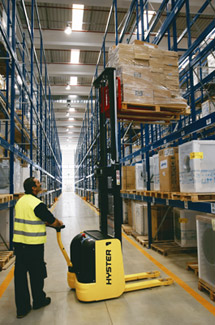







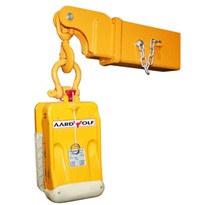
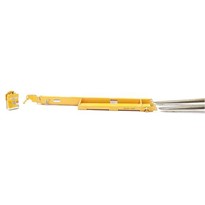
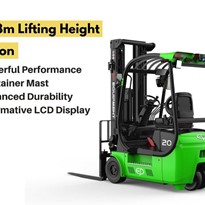
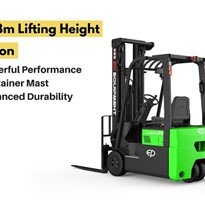
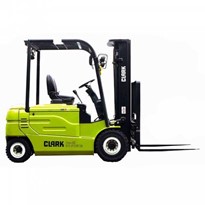
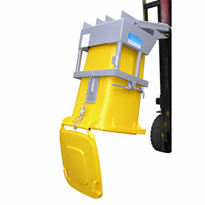
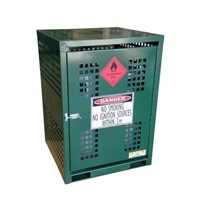
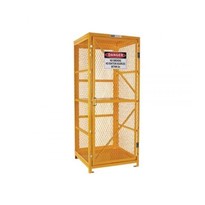

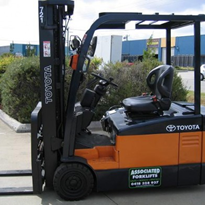
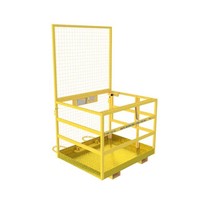
(1)-205x205.jpg)
